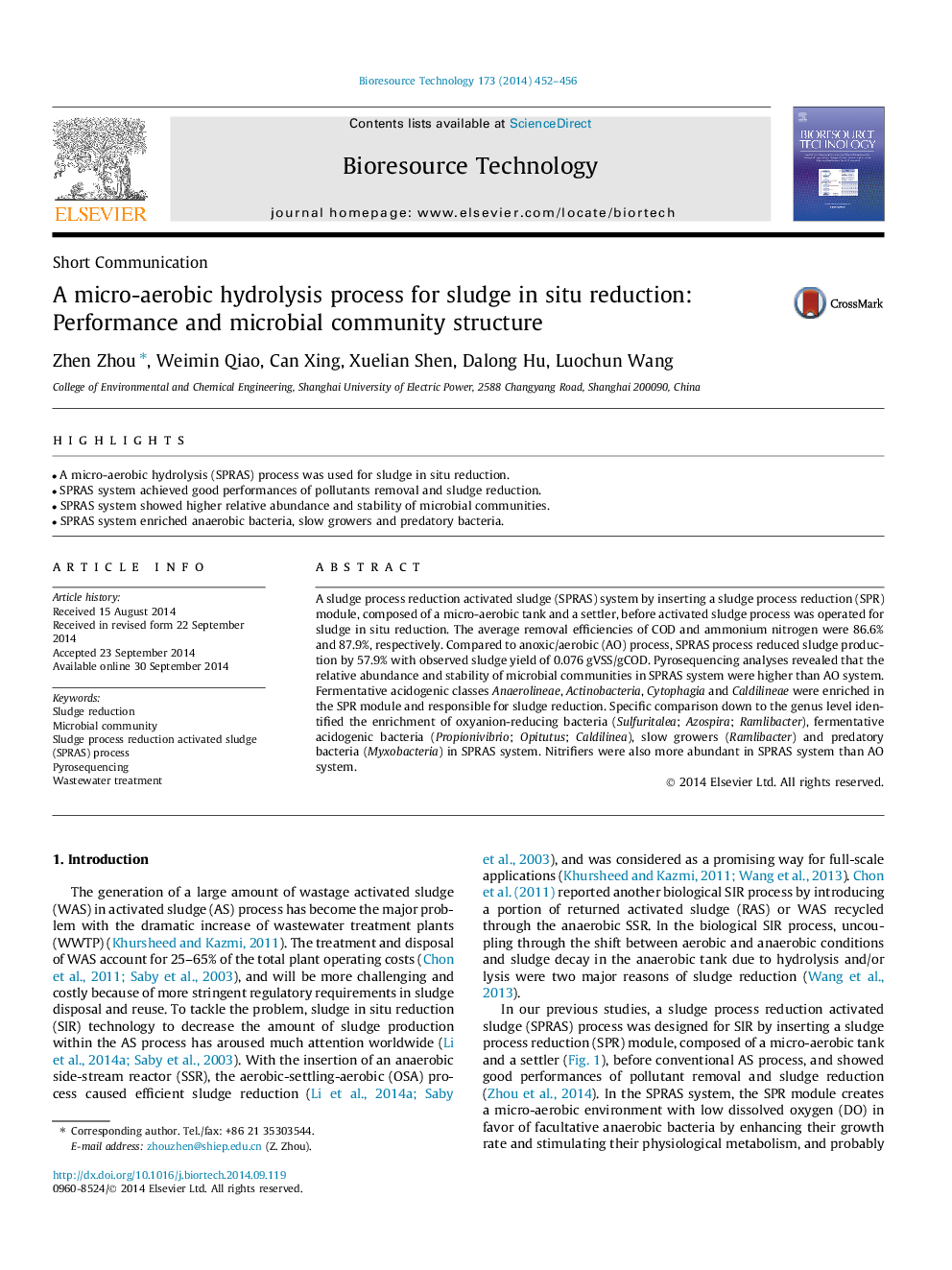| کد مقاله | کد نشریه | سال انتشار | مقاله انگلیسی | نسخه تمام متن |
|---|---|---|---|---|
| 7076467 | 1459970 | 2014 | 5 صفحه PDF | دانلود رایگان |
عنوان انگلیسی مقاله ISI
A micro-aerobic hydrolysis process for sludge in situ reduction: Performance and microbial community structure
ترجمه فارسی عنوان
یک روش هیدرولیز میکرو هوازی برای کاهش لجن در محل: عملکرد و ساختار جامعه میکروبی
دانلود مقاله + سفارش ترجمه
دانلود مقاله ISI انگلیسی
رایگان برای ایرانیان
کلمات کلیدی
موضوعات مرتبط
مهندسی و علوم پایه
مهندسی شیمی
تکنولوژی و شیمی فرآیندی
چکیده انگلیسی
A sludge process reduction activated sludge (SPRAS) system by inserting a sludge process reduction (SPR) module, composed of a micro-aerobic tank and a settler, before activated sludge process was operated for sludge in situ reduction. The average removal efficiencies of COD and ammonium nitrogen were 86.6% and 87.9%, respectively. Compared to anoxic/aerobic (AO) process, SPRAS process reduced sludge production by 57.9% with observed sludge yield of 0.076Â gVSS/gCOD. Pyrosequencing analyses revealed that the relative abundance and stability of microbial communities in SPRAS system were higher than AO system. Fermentative acidogenic classes Anaerolineae, Actinobacteria, Cytophagia and Caldilineae were enriched in the SPR module and responsible for sludge reduction. Specific comparison down to the genus level identified the enrichment of oxyanion-reducing bacteria (Sulfuritalea; Azospira; Ramlibacter), fermentative acidogenic bacteria (Propionivibrio; Opitutus; Caldilinea), slow growers (Ramlibacter) and predatory bacteria (Myxobacteria) in SPRAS system. Nitrifiers were also more abundant in SPRAS system than AO system.
ناشر
Database: Elsevier - ScienceDirect (ساینس دایرکت)
Journal: Bioresource Technology - Volume 173, December 2014, Pages 452-456
Journal: Bioresource Technology - Volume 173, December 2014, Pages 452-456
نویسندگان
Zhen Zhou, Weimin Qiao, Can Xing, Xuelian Shen, Dalong Hu, Luochun Wang,
